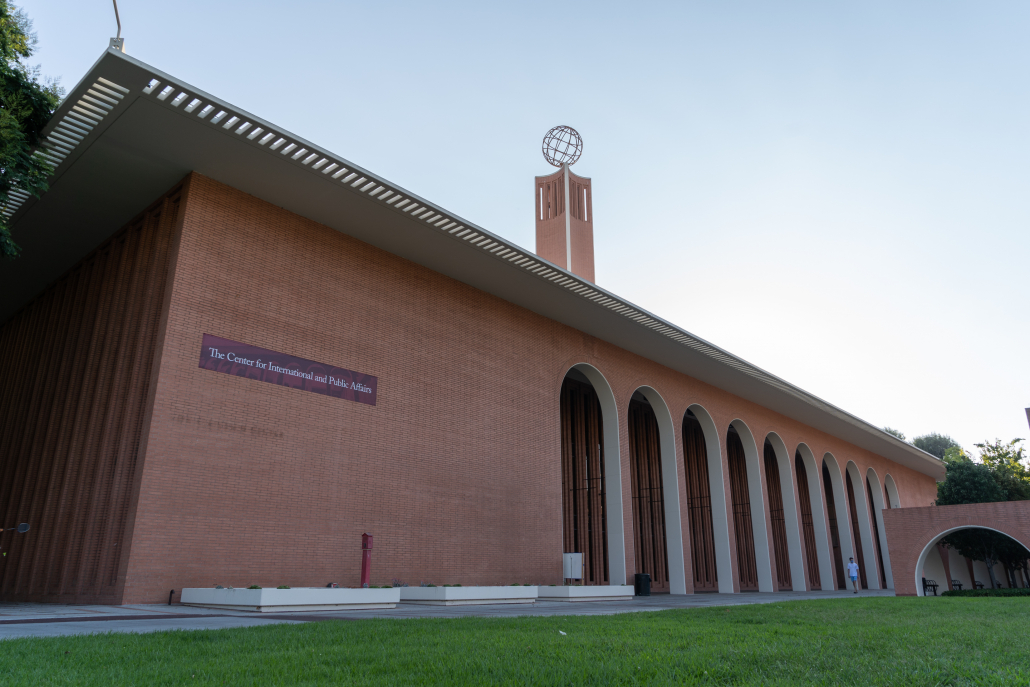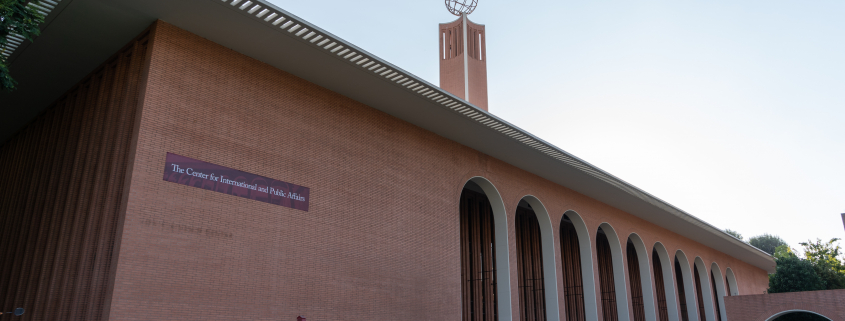International students navigate return to USC amid uncertainty

Last fall, Kavin Kapoor, a sophomore from Singapore, woke up most days at 11 p.m., a 16 hour time difference from Los Angeles. He logged onto his cinematography classes in the middle of the night and worked until he went to bed at 9 a.m.
Fed up with his flipped sleeping schedule, Kapoor, who majors in cinematic arts, film and television production, decided to live in L.A. for the spring semester. But, with the pandemic limiting Singapore’s embassies’ operation and restricting international travel, he faced added challenges.
“The visa process, I remember, was exceptionally difficult,” Kapoor said. “I went to the embassy in Singapore like three different times because I got rejected the first two, and then, because of [the coronavirus], they were shut down, so I couldn’t even enter.”
When Kapoor finally received his visa, there wasn’t the usual ‘Congrats’ or ‘Have fun in college’ from the embassy worker who stamped it. Instead, Kapoor said the demeanor of the stamp worker was, ‘Good luck, you might get deported.’
In Fall 2020, 9,950 international students enrolled at USC, the lowest enrollment since 2015, according to the Fall 2020 International Enrollment Fact Sheet by the USC Office of International Services. Less international students enrolled due to complications such as travel restrictions and closed embassies. As USC plans for a return to in-person learning, many international students still face uncertainties in returning to campus.
“The biggest challenge many international students face will be simply getting to USC,” according to Anne Goldman, assistant director of USC OIS, in an email to the Daily Trojan. “Securing flights and visas continue to be a challenge for students from certain regions of the world.”
USC schools such as the Annenberg School for Communication and Journalism and the School of Cinematic Arts surveyed their international students, asking if they anticipated delays in returning to campus, the date they expected to arrive and if they experienced any obstacles arranging their travels.
“We’re expecting about 15% of our [Annenberg] international students to be [arriving later] in the fall and that may be part of the semester or the entire semester,” Director of the Annenberg School of Journalism Gordon Stables said in an interview with the Daily Trojan on Aug. 4. “That’s where we are right now, but we know that things are still pretty fluid for a lot of students.”
Considering Annenberg’s graduate programs predominantly comprise of international students compared to undergraduate programs, this fall, 93% of Annenberg undergraduate classes will be offered in-person, as opposed to over 70% of graduate courses.
OIS has offered advising sessions, OIS Live, five days a week since Summer 2020 to help international students navigate returning to the U.S. and USC. In OIS Live, students can drop in for a one-on-one Zoom consultation with an OIS advisor.
Veda Bansal, a sophomore from India majoring in biomedical engineering, attended OIS Live sessions and said they helped her navigate her spring return.
“I went to a lot of [OIS Live sessions] before coming [to the U.S.] because I was like, ‘Can I come, what papers do I need, how do I get a visa, how does this SEVIS [Student and Exchange Visitor Information System] get activated, do I need a hybrid class?”’
International students have also come together to help each other navigate customs once they arrived in the U.S.. In the ‘Internationals at USC’ Facebook group, Hana Liu, a senior from Taiwan majoring in intelligence and cyber operations, compiled a list of every document international students needed to obtain a visa. Among the list was a USC acceptance letter and financial support documents such as a bank statement and a copy of Spring 2021 registered classes for proof of a hybrid class. With all USC classes online, international students needed classes that appeared hybrid on paper to be accepted into the U.S.
“Just going through that ordeal, trying to figure things out, I just wanted to summarize [the information] and tell everyone as well because then they don’t have to go through that, and I know how scary it is to not know,” Liu said.
As Kapoor prepared for the U.S., he consulted OIS and compared notes with other international students planning to make the same journey to ensure he gathered all the necessary documents. Because entering the U.S. during the pandemic was such an uncertain trip with unclear rulings such as hybrid classes, international students risked making the entire journey, only to be turned away at customs when an immigration officer decides not to allow them in. While scrolling on Facebook, Kapoor came across Liu’s post.
“[Liu] took that risk and went to L.A. and then told us what to print out, what to pack and what to do to get past immigration,” Kapoor said. “I was really prepared.”
To accommodate for international students unable to return in the fall, the Dornsife College of Letters, Arts and Sciences will offer online general education courses and seminars, Writing 150 courses, and large science, technology, engineering and math lectures and labs “at times convenient for overseas time zones,” according to an email to the Daily Trojan by the Dornsife College Dean of Undergraduate Education Emily Anderson.
In an interview with the Daily Trojan, Richard Fliegel, associate dean for undergraduate programs at Dornsife, said he looked to ensure that students who could not access visas may take classes at times that worked best for international time zones. International freshmen were also permitted to register for their GE seminars and WRIT 150 classes before freshmen orientations.
Fliegel has also worked with professors to offer classes earlier in the morning and later in the evening, such as at 8 a.m. and 5 p.m.
“We were looking forward to the prospect of being able to have everybody back relatively safe and vaccinated, and now it’s more complicated, because of the [Delta] variant,” Fliegel said. “But again, we are committed to the idea of providing an excellent academic experience for all of our students, new students and continuing students.”
In addition to organizing travel plans, students who remained in their home country for the past year were required to arrange vaccine plans following their arrival in the U.S., according to a University message June 18. Jacqueline Ussher, a sophomore majoring in environmental studies and business administration, lives in Brazil where vaccines were not offered to young adults until Aug. 9. To receive it earlier, she decided to travel to the U.S. in July to get her vaccination.
However, due to a travel ban, Ussher had to quarantine in another country before arriving in the U.S. She stayed in Mexico for two weeks, and once she arrived in the U.S. at a time when some mask mandates had been lifted, she found the environment and approach to the coronavirus different than in Brazil.
“When I got there, I think it was when it was like no mask. So everyone was going out, completely different. After staying home for like a year, it was kind of crazy to see. It was really nice, but it’s also kind of rough to see that because I feel like a lot of Americans start thinking that [the coronavirus is] over or that everything is normal or stuff like that, but in reality, you still have to take all precautions and be careful,” Ussher said.
With different vaccines and vaccination availability in other countries, some international students have yet to meet USC’s vaccination requirements. As of Aug. 9, the current World Health Organization vaccines accepted by USC are AstraZeneca, Covishield, Sinovac, Sinopharm/BIBP, Pfizer, Moderna and Johnson & Johnson/Janssen.
In a student media briefing Aug. 5, Chief Health Officer Dr. Sarah Van Orman said many students who are not compliant with USC’s vaccine requirement are international students given the different vaccination rollouts in other countries. As of Aug. 10, 66% of undergraduate international students and 75% of graduate international students are fully vaccinated, compared to nearly 90% of undergraduate and graduate domestic students.
By offering coronavirus testing and vaccination appointments, USC created accommodations for international students to receive vaccinations, with many appointments in August when students begin arriving.
“I think the biggest issues have been just simply, you know, there are students who can’t get a vaccine yet,” Van Orman said. “They’re just going to need to wait till they come to the United States to do that, so we really want to work with those people.”
Liu, who spent the summer in London for an internship, faced similar travel concerns when preparing for USC this fall. Arranging the logistics of returning from her internship and facing unclear guidance, she turned to OIS, advisors and students.
“I think the hard part is that [the advisors are] also confused because it’s more like the government not being so clear on how the regulations are actually applied, and so they’re trying to figure it out,” Liu said. “So they weren’t able to give us the clearest answers because they also weren’t sure. And it’s easy to be frustrated at them, but I always had to tell myself it’s also their job; they’re also trying to figure it out.”

